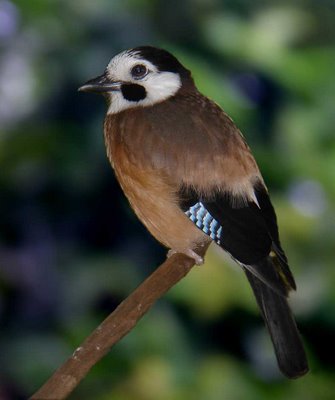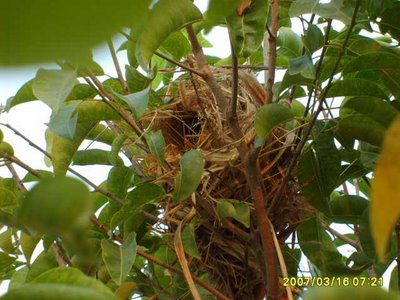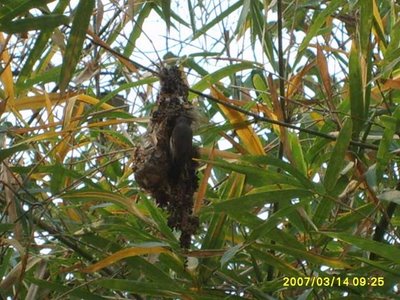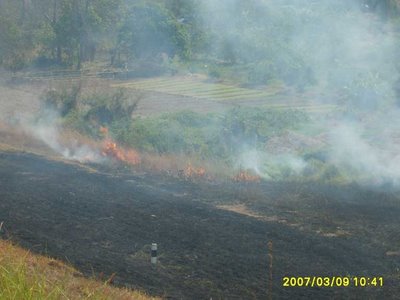An Avian Stand-Off!

Almost every morning this White-throated Kingfisher can be seen in the same spot
(March 26th HTT) T. 0645 19c plus more virulent smog. But the birds were getting on with their lives even if it was in some cases confrontational. The first one was between a Rufous-winged Buzzard and about 15 other birds, including 5 Black Drongos, 3 Eurasian Jays and a couple of lightweight Olive-backed Sunbirds. They had this buzzard cornered in a tree, what I mean is that they had it surrounded. What was eerie about this confrontation was that it was a static and silent one. They all just stared at the victim until it lost its nerve and flew off.
Another case of an attack, and this one was completely unwarranted, was between a lone Intermediate Egret flying overhead and a gang of bullying Ashy Wood-swallows. The egret is a most inoffensive bird and there they were, these bullying wood-swallows, diving on it from all directions. Completely flustered the egret dropped out of the sky and landed on the edge of a small pond whereupon the bullies lost all interest in it, it had left their sky.
(March 27th Mae Hia) Just before leaving home my attention was caught by a male Blue Rock-Thrush bobbing up and down squeaking and churring on top of my neighbour’s roof. It wasn’t long before I spotted the cause of the uproar, a cat sitting in a gutter close to the bird.
The Eurasian Jay once more causing me to almost make a misidentification of a call. This time it was doing two imitations, one of the Crested Serpent Eagle and the other of the Rufous-winged Buzzard.
A female Fulvous-breasted Woodpecker seen feeding its young in a hole in a dead tree. It was the same dead tree that has caused problems between it and those bullying wood-swallows, this time the woodpecker won the right to make it its home.
(March 28th HTT) T. 0645 19c. a low count this morning 51-13 seen and heard. But still an interesting morning. The place was alive with Plaintive Cuckoos calling, three seen sitting on telegraph wires, one was a hepatic morph.
At least four Crested Honey-Buzzards seen, three of them in the sky at the same time and one was calling with its single note ‘wheeew’ call. Managed to get a fair recording of it.
Two Intermediate Egrets seen at the lakeside feeding, don’t get to see them very often.
(March 30th HTT) T. 0640 23c a good count this morning 61-14. I got a good look at an Oriental Cuckoo, hepatic morph, this morning as it lit on a branch of a small tree about 5 metres from me. It has a larger smudge of brown on the chest than the Common Cuckoo hepatic morph and the black tail barring is more pronounced.
Heard the deep booming call of the Barred Buttonquail for the first time this year. It is said that it is only the female that makes this call, I’ve yet to confirm this.
Asian Brown Flycatcher also seen, haven’t seen one for ages. The Stonechat population has decreased dramatically to one this morning, usually I see 7 or 8 in the rice stubble, they must be heading north.
A friend of mine makes a habit of trespassing on the ‘forbidden Army Zone (no names, no pack drill) and this morning reported seeing two Grey Herons and two Little Grebes.








